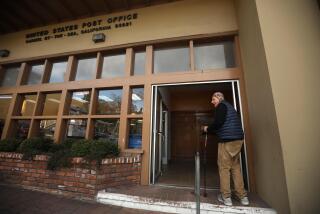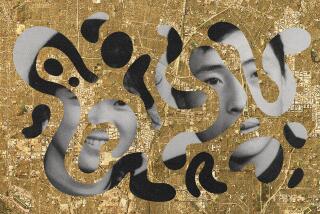New Area Code Coming to Some in North O.C.
- Share via
A new area code is coming to Southern California, but this one has a twist.
Local phone companies announced Tuesday that they are going to expand service in the 310, 818 and 213 areas by adding an “overlay” area code. The change may prove a bit confusing.
Beginning in March, 1996, the new area code--562--will be stacked on top of the three existing codes in northernmost Orange County, including all of Seal Beach and in Los Angeles County, company officials said. Once that happens, knowing where someone is won’t guarantee being able to figure out their area code.
Pacific Bell and GTE California will start with new and existing cellular phones and pagers, which tend to move around a lot anyhow. But after that, probably around the turn of the century, 562 will also apply to some regular “land-line” phones, the kind that tend to stay put.
Mike Murray, a spokesman for GTE, said that to minimize confusion, the 562 land lines will be restricted mostly to pay phones and data-transmission equipment, at least initially.
Officials say New Yorkers weren’t confused when an overlay code was introduced there in 1992, and we won’t be either. The new area code will allow phone companies to keep up with the increasing demand for phones without having to change the area codes for most existing customers.
“Overlay codes could not have come at a better time for number-hungry Southern California,” said Pac Bell Vice President Gene Sherman. “They make it possible to keep up with the demand for new telephone numbers and new technologies.”
The change will make Southern California one of only four places in the country to have an area code without a middle digit of 0 or 1. The others--in Alabama, Washington state and Arizona--will go into service next year.
As originally set up, the 0 or 1 in the middle of a three-digit area code signaled telephone switching equipment that the number was an area code and not the first three digits of a local phone number. But such area codes limited the total phone numbers in the United States to about 1 billion.
The introduction of an 11th digit for long-distance calls--a “1” preceding the three-digit area codes and the seven-digit local numbers--made possible the use of a wider variety of area code combinations. That change eventually will permit a total of about 5 billion phone numbers in the United States, officials say.
Steve Marcus, a spokesman for NYNEX, the telephone company that serves New York state and all of New England except Connecticut, said an overlay code of 917 was introduced in New York City a couple of years ago in areas previously reached only through 212 or 718.
Marcus said that, like here, the service was introduced initially for cellular phones and pagers. He said the only land lines now using 917 are telephone company phones.
“Our customers have reacted to it very well,” he said. “We kind of phased it in, and people have understood the need for it.”
Marcus conceded that “it can be confusing if an area code isn’t tied to a specific geographic area.” But he said that since the overlay code applies to only two area codes in New York City, and all public use currently is restricted to cellular phones and pagers, “there has been no confusion.”
The introduction of the overlay in the Southland will be far less disruptive than the creation of a new, geographically exclusive code, Sherman said. The creation of the 310 and 909 area codes in the past three years forced more than 4.2 million business and residential customers in Southern California to change codes. By comparison, he said, about 480,000 cellular and paging customers will change codes with the introduction of the 562 overlay.
GTE and Pac Bell say they will ask local cellular and paging companies to adopt one or more of the following methods to help reduce the demand for new phone numbers in the fast-growing 310 area:
* Assign cellular and paging customers to other than the 310 area code if they initiate service before the 562 code is introduced.
* Move some existing cellular and paging customers to 562 in 1996.
* Move at least half the prefixes assigned to existing 310 cellular and paging customers to 562 starting in May, 1996. A prefix is the first three digits of a seven-digit local phone number. Each prefix typically accommodates about 10,000 phone numbers.
Murray said the changes are not expected to cause phone book problems because cellular phones and pagers are seldom listed.
As for numerologists, satanists and others who worry about such things, Murray said that, yes, he’s aware that 5, 6 and 2 add up to 13.
“At least the new code’s not 666,” he said.
More to Read
Sign up for Essential California
The most important California stories and recommendations in your inbox every morning.
You may occasionally receive promotional content from the Los Angeles Times.













